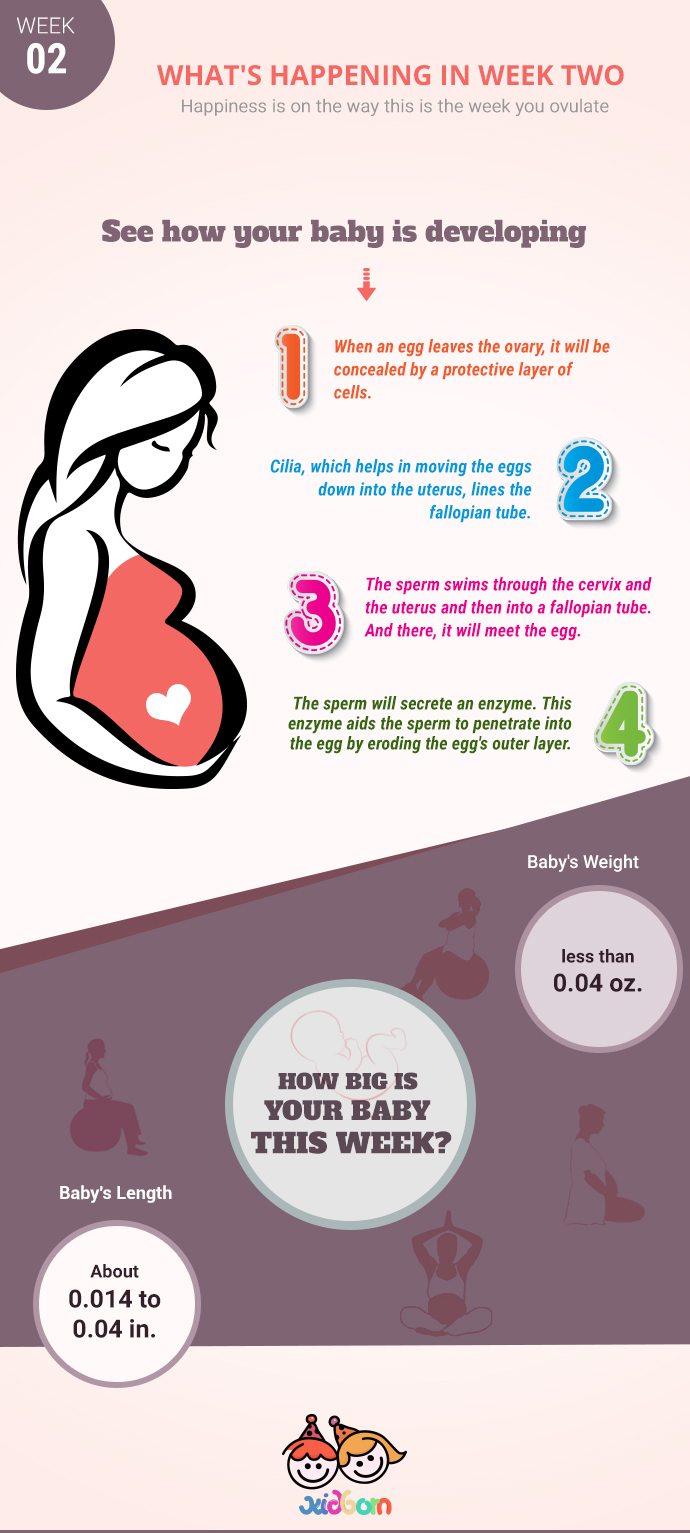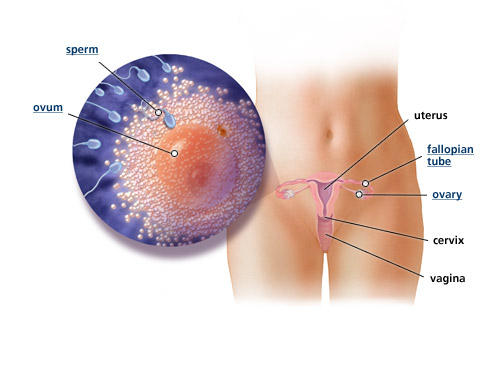
When you are expecting, you will have many doubts regarding the pregnancy and the developments of your baby. What are the pregnancy life changes in week two? Discover what changes are going on in your body and how to perceive the baby. When you are two weeks pregnant, you will not actually feel that you are pregnant, since you won’t find any drastic changes in your body. However, your body will be producing massive quantities of pregnancy hormones, and your baby will be growing faster than any other course of the pregnancy. All these developments just happen in the second week.
As of this week, you can say that your baby doesn’t exist, but this is the week you begin to ovulate. The ovary will release a ripened egg or otherwise called an ovum, into your fallopian tube. Over there, it will calmly wait for the arrival of the sperm, that has survived the 6- to 8-inch journey through the cervix and uterus. During the beginning of the ‘journey’, around 75 to 900 million sperms will be participating, and only less than a thousand of the sperms will actually pass the cervix. However, it does not end there. Only one successful swimmer will have the honour of entering the egg at the time of conception.

Now you may be about to release an egg that could develop into a baby if your partner’s sperm fertilises it. Therefore you can’t say that you are pregnant yet.
In the previous week, there will be an increase in the amount of progesterone and estrogen coursing through your bloodstream urged your uterus to create a lush, blood-rich lining of tissue to support a potential fertilised egg. At the same time, the eggs will get ripened in the fluid-filled sacs, called follicles, in your ovaries.
At the starting of this week, mostly around day 14 of a 28-day cycle, you may start ovulating. One of your eggs will break from its follicle, and it will be swept off from your ovary and to the fallopian tube.
During the following 12 to 24 hours, that egg will get fertilised if one of the 250 million sperm, which is ejaculated by your partner succeeds to swim all the way from the vagina through the cervix and then up through the uterus to the fallopian tube. This then penetrates into the egg. Only around 400 sperm will survive the laborious 10 hour journey to the egg, and only one can succeed in tunnelling through the outer membrane of the egg.
The nucleus of the sperm will merge with the egg, as they combine their genetic material and this occurs in the next ten to thirty hours. If the sperm carries an X chromosome, baby will be a girl, and if it carries a Y chromosome, then it will be a boy.
The fertilised egg is now called as the Zygote and during the three-to four-day trip from the fallopian tube to the uterus; the fertilised egg will split into 16 identical cells. Once it enters the uterus, the zygote is then known as a morula. After a day or two, it will start tunnelling into the lining of the uterus, proceeding its incredible growth and transformation.
A blastocyst is the term referred by the scientists when the developing baby is a little ball of cells. It will have an inner cell mass that will be the embryo itself, a fluid-filled cavity that will be the amniotic sac, and also an outer cell mass that will be the placenta. The placenta is the pancake-shaped organ that delivers life-sustaining oxygen and nutrients to the baby, and it also carries away the waste products. Anyway each baby grows a little differently in womb and growth and development process will vary accordingly.
The due date can be estimated from the first day of your previous menstrual period. Conception occurs around two weeks from due date and that’s when you’re actually considered to be pregnant. In around 40 weeks time your baby will grow from the size of a tiny seed to the size of a watermelon.
Fallopian tube: A sperm swims all the way from the vagina and then up through the cervix and uterus and finally reaches the fallopian tube to fertilise the egg.
Ovary: One of the eggs get broken out of the follicle in the ovary and is then swept into the fallopian tube.
Ovum: Once a sperm tunnels through the outer membrane to enter the ovum, or egg, their genetic material combines to build a new cell that soon begins to divide rapidly.
Sperm: Out of around 250 million sperms that occurs in a normal ejaculation it takes only one sperm to fertilise the egg.

For a conception to happen, several things should fall in place. Timing is one such thing. If you want to increase the chances of getting pregnant, then you need to aim to have sex sometime within 48 hours before you ovulate and perhaps again on the day you think you’re ovulating. It is required in order to accommodate the lifespan of both sperms, which survive for around three days or more, and the egg, which survives not more than 24 hours after the ovulation. Therefore make sure that you and your partner have plenty of time together so as to make love.
Most of the babies are born nearly 38 weeks after the egg has been fertilised, but since it’s quite difficult to point out exactly when the egg and sperm got merged and your healthcare provider will calculate your due date by counting 40 weeks from the first day of your previous menstrual period. All of this presumes that your cycle length is normal, which is about four weeks. Some women have longer or perhaps shorter cycles and may have their due dates altered after an ultrasound.
Make sure that you see your healthcare provider for a preconception checkup so as to make sure that your body is in the best possible shape for getting pregnant. The doctor may refer you to various services if you need to stop drinking, smoking, or even taking drugs. Moreover, if you’re having any prescription or over-the-counter drugs, it is necessary that you inform the doctor to seek permission regarding the continuous usage of them.
It is the most powerful creation to have life growing inside of you.There is no bigger gift